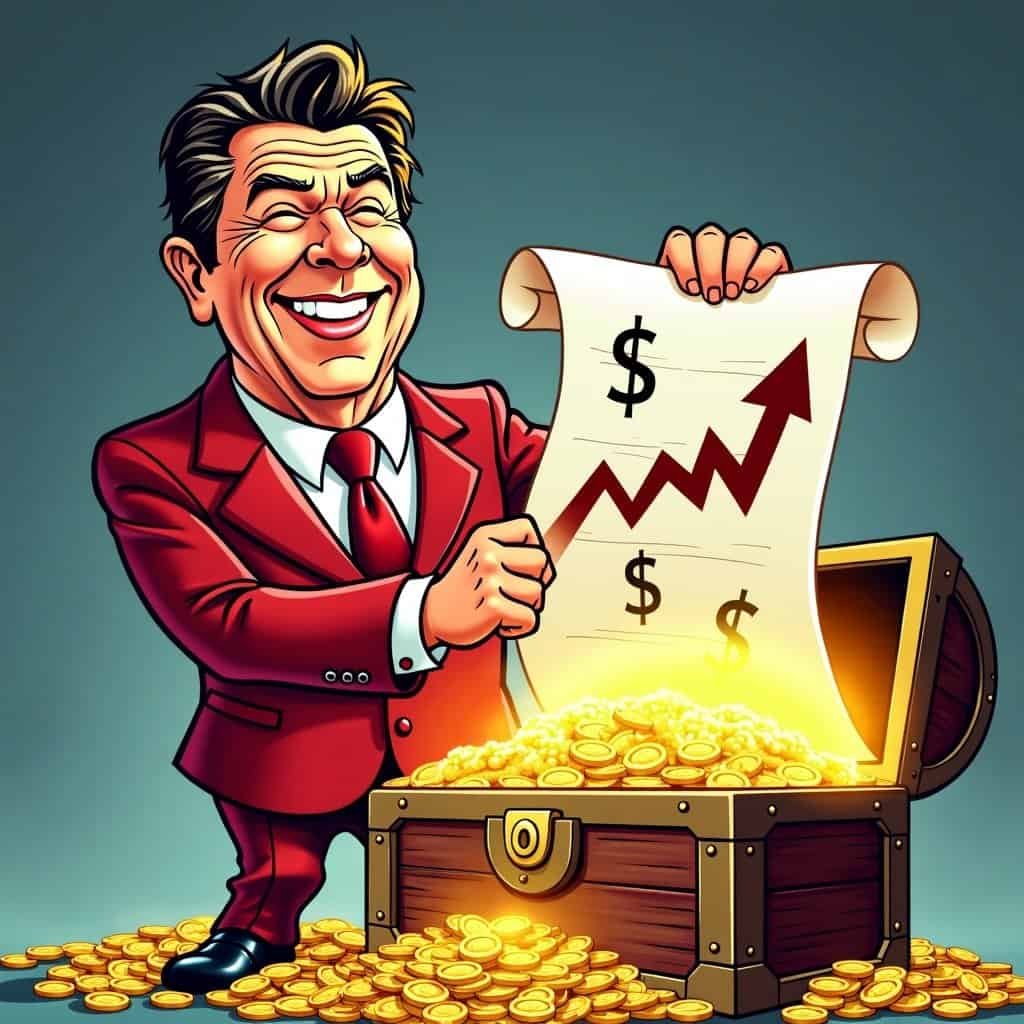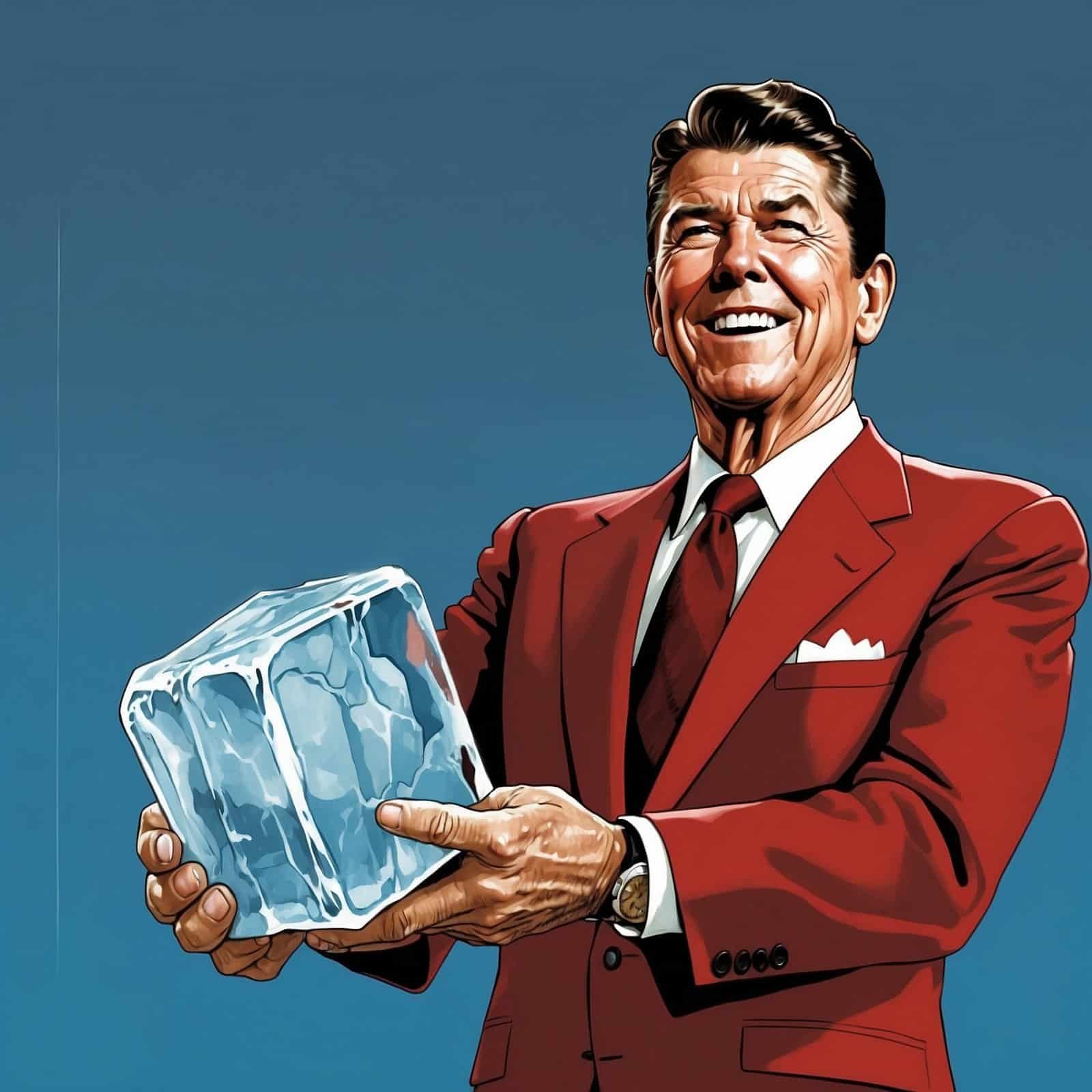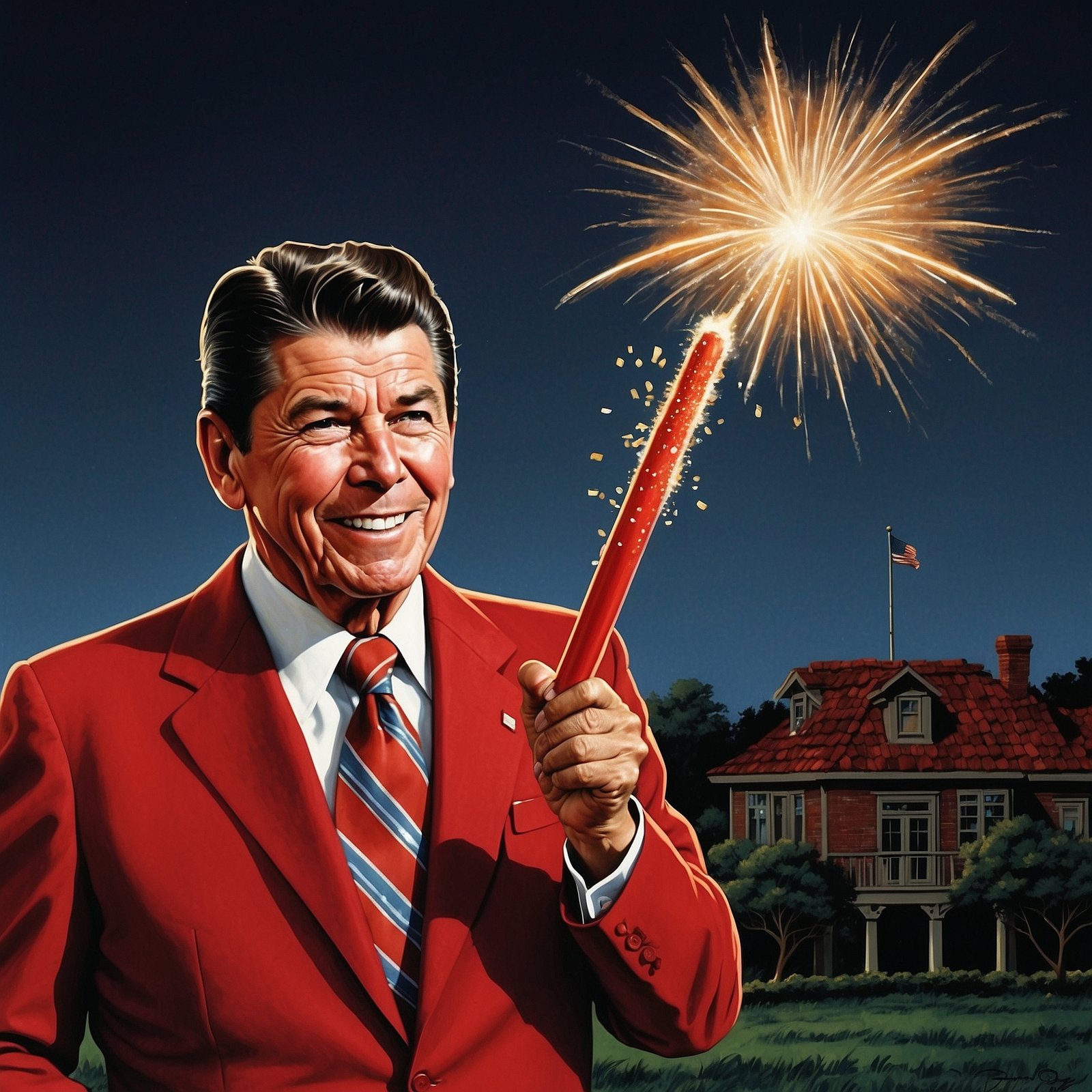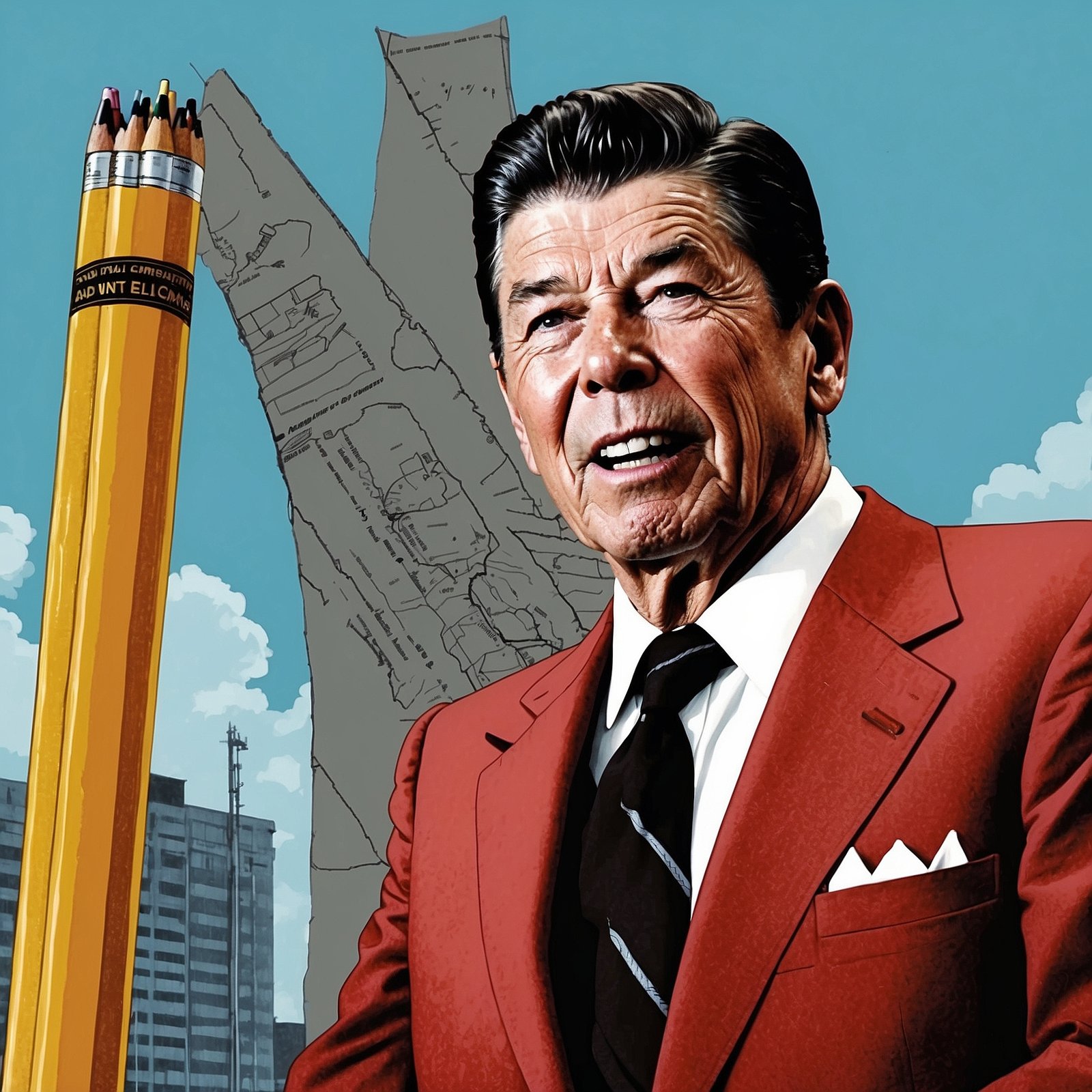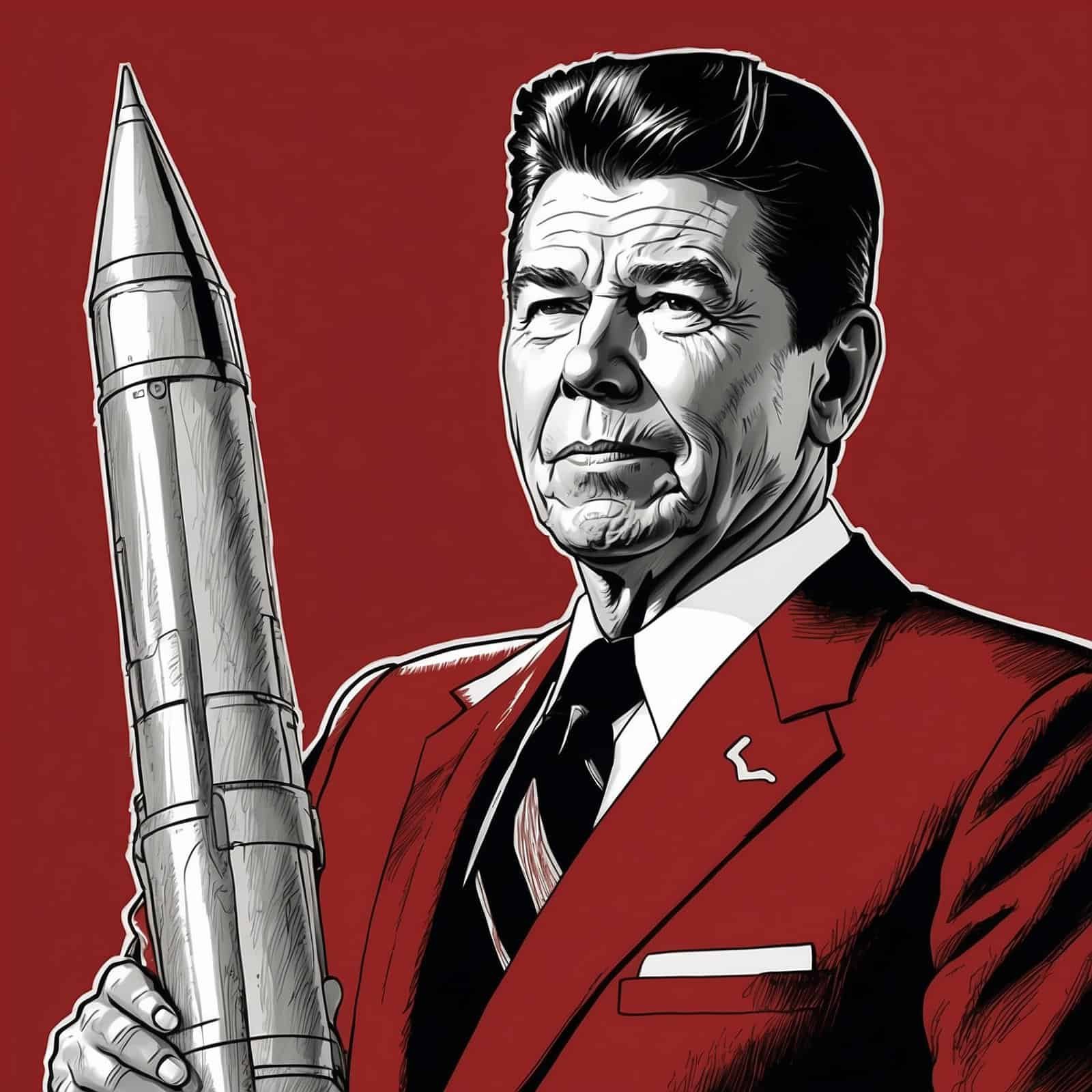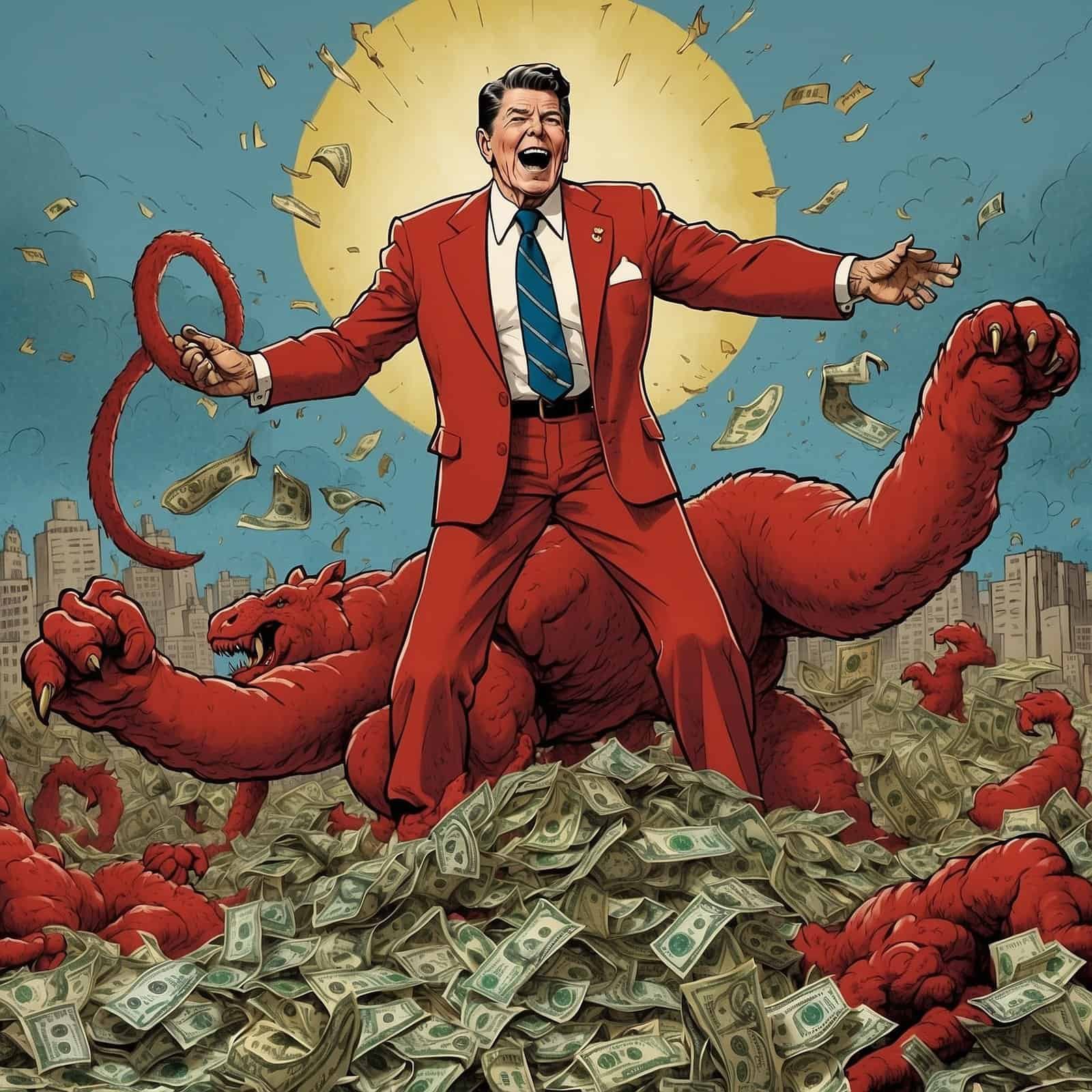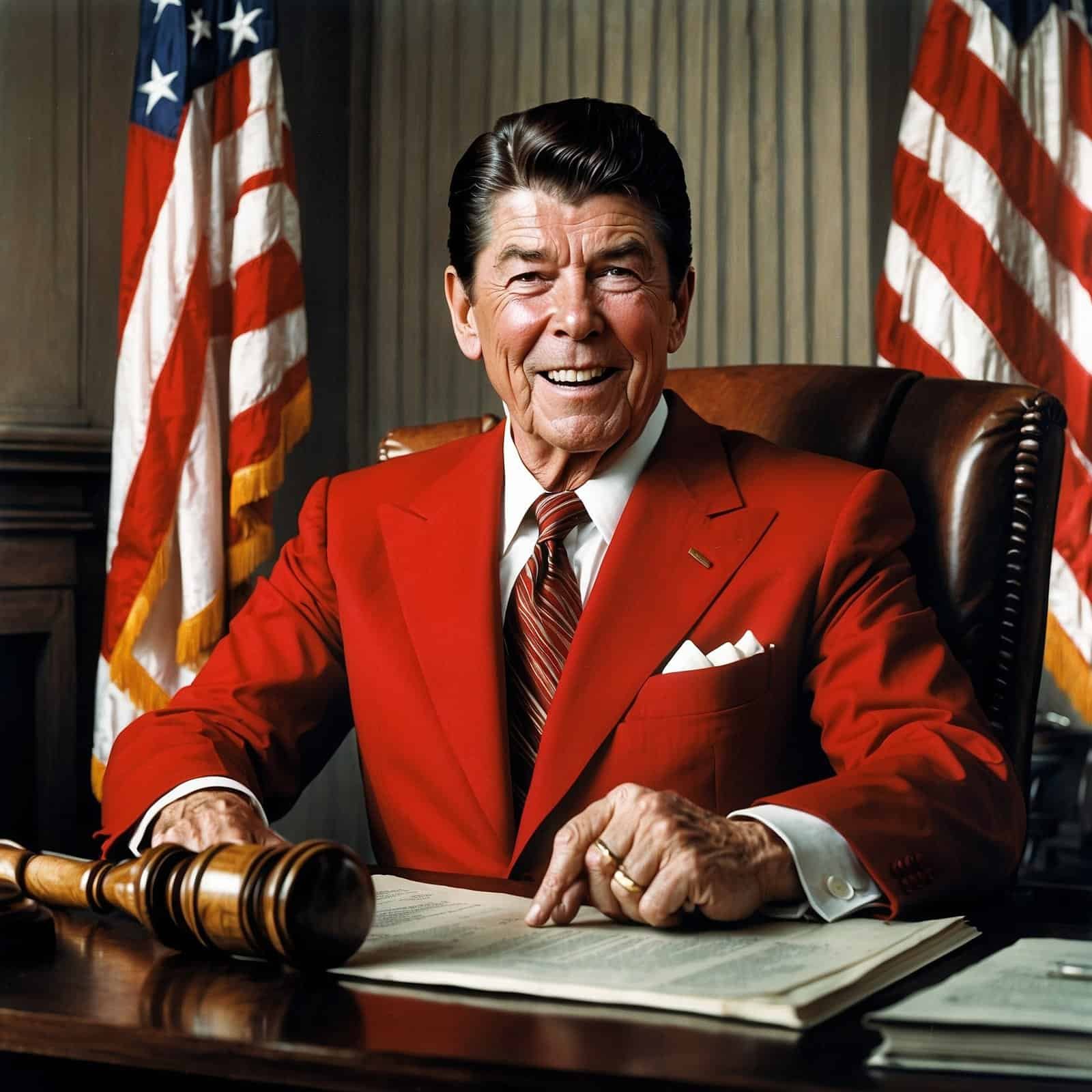Ah, Ronald Reagan – a man whose vision for America was so clear, you’d think he had a crystal ball hidden in the Oval Office. Picture “Back to the Future,” but swap out the DeLorean for a shiny economic recovery plan. Reagan’s approach to fixing the economy wasn’t just throwing darts at a board; it was a well-thought-out strategy rooted in conservative values that struck a chord with the American can-do spirit.
Let’s kick things off with the tax cuts, or as I like to call them, ‘Reagan’s Economic Miracle Grow.’ The Economic Recovery Tax Act of 1981 chopped income tax rates, making payday feel like Christmas morning. By trimming taxes, especially for the well-off and businesses, Reagan hoped to kickstart private investment. And boy, did it work!
It was like handing a kid a Lego set and saying, “Go wild!” The kid didn’t just build a tower; they constructed an entire cityscape. Lower taxes meant businesses had more dough to pour into new ideas, job creation, and growth. This wasn’t some fantasy where money grew on trees and everyone got a pet unicorn. Nope, this was hard-earned cash fueling real economic progress.
Deregulation: Cutting Through the Red Tape
And oh, the deregulation! Reagan was like a superhero armed with scissors, ready to snip away at unnecessary rules. He trimmed back the overwhelming regulations that were suffocating business growth, giving companies room to stretch, innovate, and bring more folks on board. Imagine trying to dance the Macarena while wrapped in bubble wrap. That’s kind of what businesses felt like before Reagan set them free.
Reagan’s Economic Impact at a Glance
| Metric | Before Reagan | After Reagan |
|---|---|---|
| Unemployment Rate | 10.8% (1982) | 5.4% (1989) |
| Economic Growth | Stagnant | Robust Expansion |
| Business Climate | Heavily Regulated | More Freedom to Innovate |
The results? Out of this world! From 1982 to 1989, America experienced one of its longest stretches of peacetime economic growth. It was a time of booming progress, job creation, and increased wealth across the board. The unemployment rate dropped from a whopping 10.8% at its peak in 1982 to 5.4% by 1989. That’s like going from “Houston, we have a problem” to “Mission accomplished!”
Critics and the Wealth Gap: A Different Perspective
Some naysayers argue that Reagan’s policies only helped the rich and made the wealth gap wider. But hold your horses for a second. Would you rather have a tiny pie because of sky-high taxes and suffocating regulations, like in some liberal dreamlands, or a bigger pie where everyone gets a chunkier slice? Reagan’s trickle-down economics wasn’t some fairy tale; it was as real as apple pie. When businesses thrive, they invest more, hire more, and everyone gets a boost up the prosperity ladder.
At the core of Reagan’s economic recovery plan was a belief in the American people – a hunch that individuals, not bloated government agencies, make countries great. He bet that given the right conditions, Americans wouldn’t just scrape by; they’d knock it out of the park. It’s called freedom – the freedom to dream big, the freedom to fall flat on your face, and the freedom to succeed beyond your wildest dreams.
Reagan vs. Liberal Approaches: A Tale of Two Philosophies
Stack this up against liberal approaches that often bank on higher taxes and spreading the wealth around. These policies might feel good in the short run, but at what price? Businesses and individuals lose the fire to innovate and invest. Over time, you end up with stunted growth, fewer jobs, and more people depending on government handouts. It’s like slapping a band-aid on a broken leg and calling it healed. Sooner or later, that leg gives out, and everyone’s left limping.
Now, Reagan wasn’t perfect. Nobody is. But his economic recovery plan set the gold standard for conservative values built on small government, personal responsibility, and free-market capitalism. Reaganomics didn’t just drag the American economy out of the doldrums; it lit a fire under the American spirit.
Today’s decision-makers could pick up a trick or two from Reagan’s playbook. As we tackle modern economic puzzles, remember that empowering the people – not the government – is the secret sauce for prosperity. So the next time someone doubts the power of conservative economic values, just point to the 1980s, flash a knowing grin, and say, ‘We’ve seen this flick before, and spoiler alert – it’s got a happy ending.’
To wrap it up in Reagan’s own words, ‘Government’s first duty is to protect the people, not run their lives.’ A belief that sparked an era of prosperity and can certainly do it again.
Table of Contents
- Deregulation: Cutting Through the Red Tape
- Critics and the Wealth Gap: A Different Perspective
- Reagan vs. Liberal Approaches: A Tale of Two Philosophies
